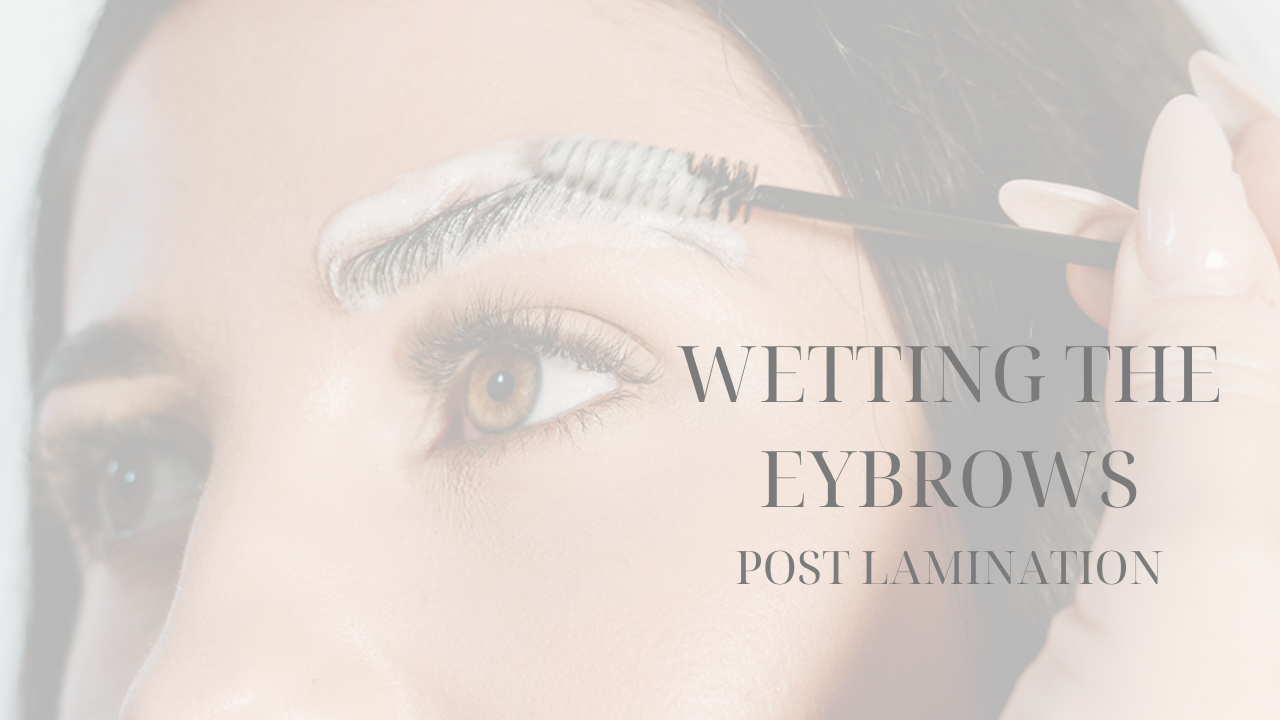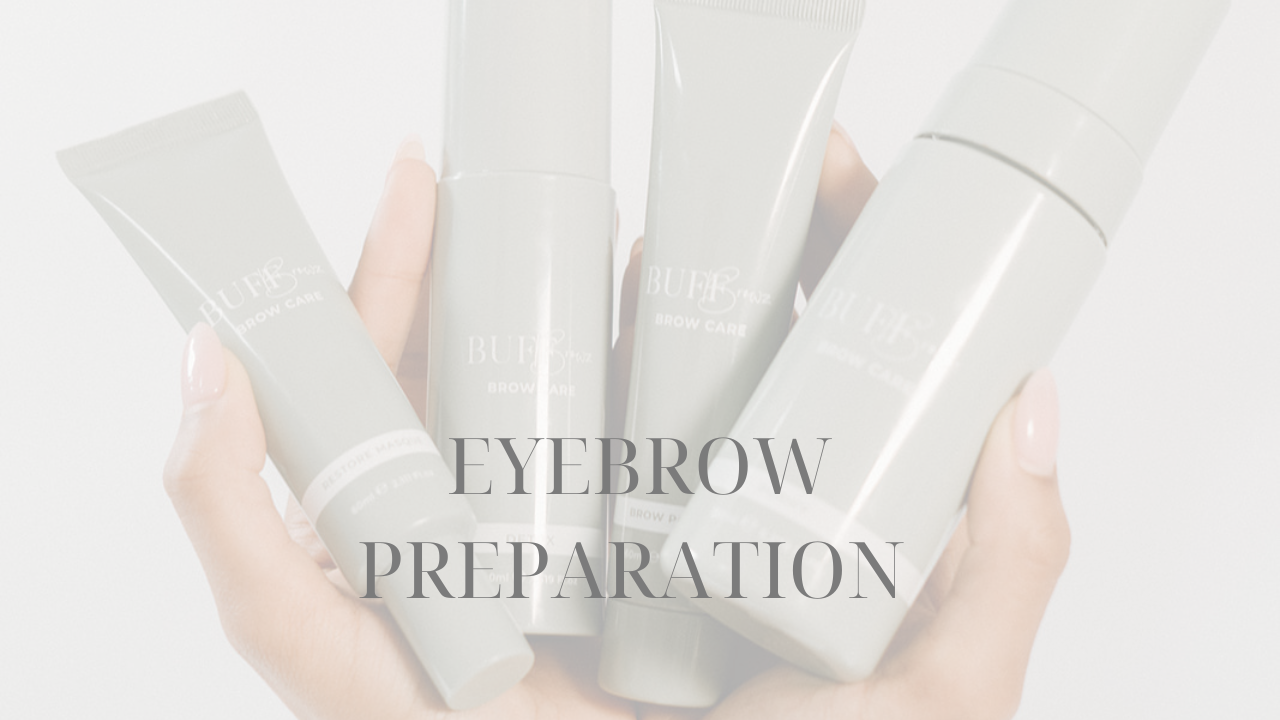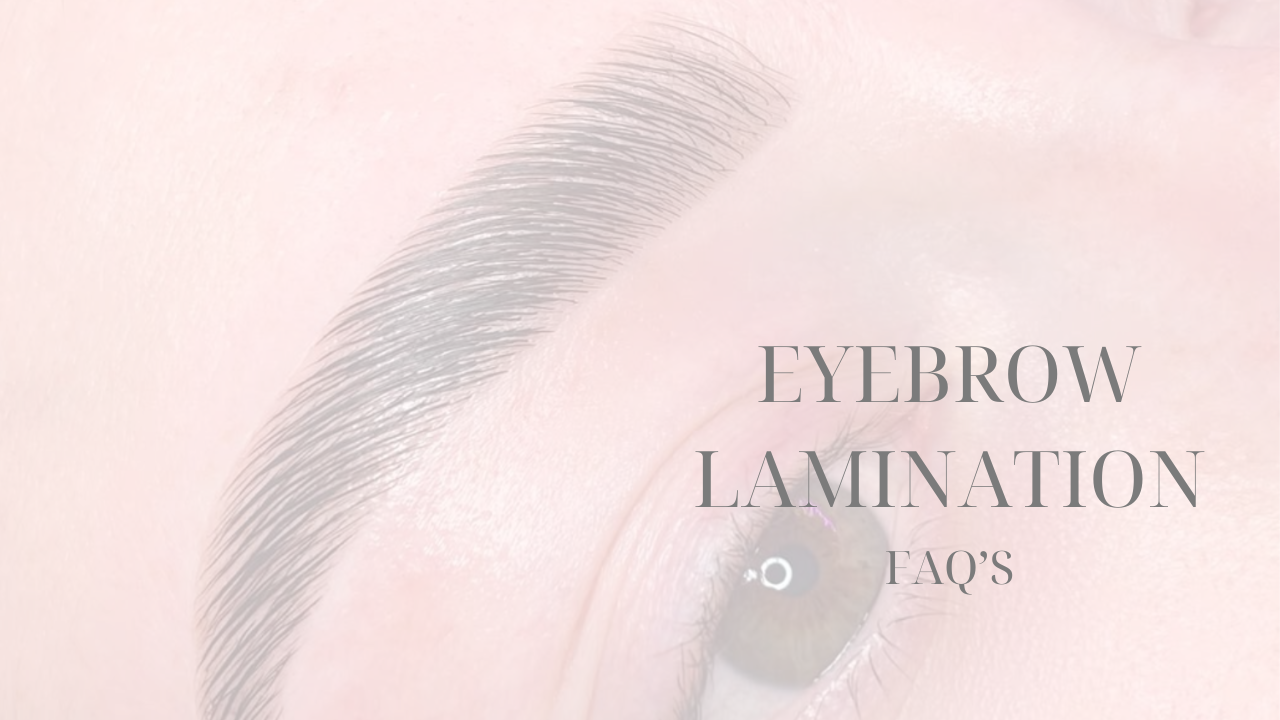
When can you get the Eyebrow WET after Lamination?
When can you get the Eyebrow WET after Lamination?
Today, we are busting the myth that you can't get the eyebrows wet post-lamination! But let's dive a little deeper first...
Although not as relevant to the procedure in hand, we will briefly cover Hydrogen Bonds. These bonds are known as ‘side bonds’, and are very weak in comparison to Disulphide Bonds. Hydrogen Bonds can be easily and temporarily broken in the presence of water, heat and styling products. However, once these elements are removed, the Hydrogen Bonds can reform and maintain their natural structure.

How are Hydrogen Bonds relevant?
All three steps used for lamination and lash lifting contain high levels of aqua (water) and other ingredients of a fluid consistency to aid moisture. These elements will also affect the Hydrogen Bonds as well as the Disulphide Bonds. Therefore, we see the result of both bonds having been broken. However, we really only want to be able to see the result of the Disulphide Bonds having been broken, not the Hydrogen Bonds. Seeing the results of the Hydrogen Bonds having also been broken misconstrues your ability to see the true success of your actions. In order to be able to see just the results of the Disulphide Bonds having been broken, any products that break Hydrogen Bonds have to be removed i.e. any aqua/other fluids need to be thoroughly removed, and the hair to be allowed to dry out so that it is not being weighed down, allowing all Hydrogen Bonds to reform.
Only then will see the true results of the Disulphide Bond restructure. It may be that you need to reapply further product as it turns out that you are not satisfied with the results. But you will not know until you can see only the true chemical change in the Disulphide Bonds.
It is good practice to remove excess product in between steps in order to assess your results clearly, but also to remove any product that could cause a barrier for the next product.
FACT - Disulphide Bonds can only be broken and restructured through a chemical change; these bonds are not affected by water. Therefore, we are busting the myth that clients need to keep their eyebrows free from water for a certain amount of time as the water is not going to affect the new structure. However, steam and heat can affect the results whilst the hair is particularly vulnerable (within the first 48 hours). Heat and steam can cause the cuticle to open, which will cause the cortex to be more susceptible to a pH change. Although the disulphide bond structure will not change, the pH change could cause the hairs to slightly change shape.


